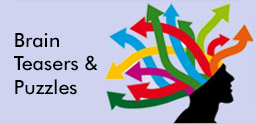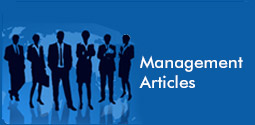What is “Organizational Change?”
Typically, the concept of organizational change is in regard to organization-wide change, as opposed to smaller changes such as hiring a new person, modifying a program, etc. Examples of organization-wide change might include a change in mission, restructuring operations, new technologies, mergers, major collaborations, rightsizing, new programs such as Total Quality Management, re-engineering, etc. Some experts refer to this as organizational transformation. Often this term designates a fundamental and radical reorientation in the way the organization operates.
What provokes “Organizational Change”?
Change should not be done for the sake of change — it’s a strategy to accomplish some overall goal. Usually organizational change is provoked by some major factors like plan to address major new markets/clients, need for dramatic increases in productivity/services, etc. Typically, organizations must undertake organization-wide change to evolve to a different level in their life cycle, e.g., going from a highly reactive, entrepreneurial organization to more stable and planned development. A new chief executive can provoke organization-wide change when his or her new and unique personality pervades the entire organization.
Why is Organization-Wide Change difficult to accomplish?
There is always a strong resistance to change. People are afraid of the unknown. Many people think things are already just fine and don’t understand the need for change. Many doubt there are effective means to accomplish major organizational change. Often there are conflicting goals in the organization, e.g., to increase resources to accomplish the change yet concurrently cut costs to remain viable. Organization-wide change often goes against the very values held dear by members in the organization, that is, the change may go against how members believe things should be done.
What are the basic strategies for Change Management?
Rational-Empirical
People are rational and will follow their self-interest — once it is revealed to them. Change is based on the communication of information and the incentives.
Normative-Re-educative
People are social beings and will adhere to cultural norms and values. Change is based on redefining and reinterpreting existing norms and values, and developing commitments to new ones.
Power-Coercive
People are basically compliant and will generally do what they are told or can be made to do. Change is based on the exercise of authority and the imposition of sanctions.
Environmental-Adaptive
People oppose loss and disruption but they adapt readily to new circumstances. Change is based on building a new organization and gradually transferring people from the old one to the new one.
What are the skills required for Change Management?
Managing the kinds of changes encountered by and instituted within organizations requires an unusually broad and finely-honed set of skills, the major ones being –
• Political Skills.
Organizations are first and foremost social systems. Without people there can be no organization. Organizations are hotly and intensely political. And, as one wag pointed out, the lower the stakes, the more intense the politics. Change agents dare not join in this game but they had better understand it.
• Analytical Skills
Two particular sets of skills are very important here: workflow operations or systems analysis, and financial analysis. Change agents must learn to take apart and reassemble operations and systems in novel ways, and then determine the financial and political impact of what they have done.
• People Skills
People are the sine qua non of organization. Moreover, they are characterized by different shapes, colors, intelligence and ability levels, gender, religious beliefs, attitudes toward life and work, personalities, and priorities — and these are just a few of the dimensions along which people vary. The skills most needed in this area are communication or interpersonal skills. Part of the job of a change agent is to reconcile and resolve the conflict between and among disparate (and sometimes desperate) points of view.
• System Skills.
System is an arrangement of resources and routines intended to produce specified results. To organize is to arrange. A system reflects organization and, by the same token, an organization is a system.
Computers and the larger, information-processing systems are generally known as “hard” systems while compensation systems, appraisal systems, promotion systems, and reward and incentive systems are often referred to as “soft systems”. One needs to master both these systems.
Business Skills.
Simply put, it is important to understand how a business works. This entails an understanding of finance — where it comes from, where it goes, how to get it, and how to keep it. It also calls for knowledge of markets and marketing, products and product development, customers, sales, selling, buying, hiring, firing and just about anything else you might think of.
What are the factors that need to be considered while selecting a Change Strategy?
Generally speaking, there is no single change strategy. You can adopt a general or what is called a “grand strategy” but, for any given initiative, you are best served by some mix of strategies.
Some of the important factors that should be considered while selecting a change strategy are as follows –
1. Degree of Resistance. Strong resistance argues for a coupling of power-coercive and environmental-adaptive strategies. Weak resistance or concurrence argues for a combination of rational-empirical and normative-re-educative strategies.
2. Target Population. Large populations argue for a mix of all four strategies, something for everyone so to speak.
3. The Stakes. High stakes argue for a mix of all four strategies. When the stakes are high, nothing can be left to chance.
4. The Time Frame. Short time frames argue for a power-coercive strategy. Longer time frames argue for a mix of rational-empirical, normative-re-educative, and environmental-adaptive strategies.
5. Dependency. This is a classic double-edged sword. If the organization is dependent on its people, management’s ability to command or demand is limited. Conversely, if people are dependent upon the organization, their ability to oppose or resist is limited. Mutual dependency almost always signals a requirement for some level of negotiation.
How is the organization-wide change best carried out?
Successful change must involve top management, including the board and chief executive. Usually there’s a champion who initially instigates the change by being visionary, persuasive and consistent. A change agent role is usually responsible to translate the vision to a realistic plan and carry out the plan. Change is usually best carried out as a team-wide effort. Communications about the change should be frequent and with all organization members. To sustain change, the structures of the organization itself should be modified, including strategic plans, policies and procedures. This change in the structures of the organization typically involves an unfreezing, change and re-freezing process.
The best approach to address resistances is through increased and sustained communications and education. For example, the leader should meet with all managers and staff to explain reasons for the change, how it generally will be carried out and where others can go for additional information. A plan should be developed and communicated. Plans do change. That’s fine, but communicate that the plan has changed and why. Forums should be held for organization members to express their ideas for the plan. They should be able to express their concerns and frustrations as well.


 +91-9815411990
+91-9815411990 training@globalvoiceindia.com
training@globalvoiceindia.com





